| [1] Osanai T, Kuroda S, Sugiyama T, et al. Therapeutic effects of intra-arterial delivery of bone marrow stromal cells in traumatic brain injury of rats--in vivo cell tracking study by near-infrared fluorescence imaging. Neurosurgery. 2012; 70(2):435-444.
[2] Çapk?n M, Çakmak S, Kurt FÖ, et al. Random/aligned electrospun PCL/PCL-collagen nanofibrous membranes: comparison of neural differentiation of rat AdMSCs and BMSCs. Biomed Mater. 2012;7(4):045013.
[3] Nie L, Yin YL, Liu YQ, et al. Ultrafiltration membrane extract mixture from Angelica sinensis and Hedysarum polybotrys induced transdifferentiation of BMSCs in mice: an experimental research. Zhongguo Zhong Xi Yi Jie He Za Zhi. 2013;33(5):632-637.
[4] Zhang Y, Wu C, Friis T, et al. The osteogenic properties of CaP/silk composite scaffolds. Biomaterials. 2010;31(10): 2848-2856.
[5] Tang Z, Xie Y, Yang F, et al. Porous tantalum coatings prepared by vacuum plasma spraying enhance bmscs osteogenic differentiation and bone regeneration in vitro and in vivo. PLoS One. 2013;8(6):e66263.
[6] Yarak S, Okamoto OK. Human adipose-derived stem cells: current challenges and clinical perspectives. An Bras Dermatol. 2010;85(5):647-656.
[7] Salem HK, Thiemermann C. Mesenchymal stromal cells: current understanding and clinical status. Stem Cells. 2010; 28(3):585-596.
[8] 钟俊,刘卫平,龙乾发,等.两种诱导骨髓间充质干细胞向GABA 能神经元分化的比较[J].中华神经外科疾病研究杂志,2012, 11(2):141-144.
[9] Deng LX, Hu J, Liu N, et al. GDNF modifies reactive astrogliosis allowing robust axonal regeneration through Schwann cell-seeded guidance channels after spinal cord injury. Exp Neurol. 2011;229(2):238-250.
[10] 李涛,程焱.NGF基因修饰的BMSCs对SD大鼠海马区细胞凋亡及NMDAR1表达的影响[J].山东医药,2009,49(21):3-5.
[11] Horita Y, Honmou O, Harada K, et al. Intravenous administration of glial cell line-derived neurotrophic factor gene-modified human mesenchymal stem cells protects against injury in a cerebral ischemia model in the adult rat. J Neurosci Res. 2006;84(7):1495-1504.
[12] Wang Y, Chang CF, Morales M, et al. Protective effects of glial cell line-derived neurotrophic factor in ischemic brain injury. Ann N Y Acad Sci. 2002;962:423-437.
[13] Mohammad-Gharibani P, Tiraihi T, Mesbah-Namin SA, et al. Induction of bone marrow stromal cells into GABAergic neuronal phenotype using creatine as inducer. Restor Neurol Neurosci. 2012;30(6):511-525.
[14] Ye Y, Zeng YM, Wan MR, et al. Induction of human bone marrow mesenchymal stem cells differentiation into neural-like cells using cerebrospinal fluid. Cell Biochem Biophys. 2011;59(3):179-184.
[15] Sagara J, Makino N. Glutathione induces neuronal differentiation in rat bone marrow stromal cells. Neurochem Res. 2008;33(1):16-21.
[16] 娄远蕾,涂伟,汪泱,等.经阿魏酸钠定向诱导的骨髓间充质干细胞在脑缺血大鼠体内移植研究[J].中国微侵袭神经外科杂志,2010, 15(12):558-561.
[17] 陈兵,尹延庆,柯俊龙,等.川芎嗪诱导大鼠骨髓间充质干细胞分化为神经元样细胞:最佳诱导剂量筛选[J].中国组织工程研究与临床康复,2010,14(6):1072-1077.
[18] Lin LF, Doherty DH, Lile JD, et al. GDNF: a glial cell line-derived neurotrophic factor for midbrain dopaminergic neurons. Science. 1993;260(5111):1130-1132.
[19] Garbayo E, Montero-Menei CN, Ansorena E, et al. Effective GDNF brain delivery using microspheres--a promising strategy for Parkinson's disease. J Control Release. 2009; 135(2):119-126.
[20] Li L, Lü G, Wang YF, et al. Glial cell-derived neurotrophic factor mRNA expression in a rat model of spinal cord injury following bone marrow stromal cell transplantation. Neural Regen Res 2008;3(10):1056-1059.
[21] Yaghoobi MM, Mahani MT. NGF and BDNF expression drop off in neurally differentiated bone marrow stromal stem cells. Brain Res. 2008;1203:26-31.
[22] Van Damme A, Vanden Driessche T, Collen D, et al. Bone marrow stromal cells as targets for gene therapy. Curr Gene Ther. 2002;2(2):195-209.
[23] 熊怀林,杨朝鲜,高小青,等.在GDNF 基因修饰的骨髓基质细胞与缺氧复氧神经细胞的共培养中神经细胞凋亡的变化[J].泸州医学院学报,2011,34(5):552-555.
[24] 熊怀林,杨朝鲜,高小青,等.胶质源性神经营养因子基因修饰骨髓间充质干细胞与缺氧复氧神经细胞的共培养[J].中国组织工程研究,2011,15(49):9141-9145.
[25] 李娟,廖彦生,杨朝鲜.GDNF 基因修饰对骨髓间充质干细胞体外诱导分化为神经元样细胞的影响[J].泸州医学院学报,2012, 35(5): 455-459.
[26] 管小俊,宋琳,郭雪君,等.携带绿色荧光蛋白基因慢病毒转染的大鼠骨髓间充质干细胞的干细胞特性检测[J].诊断学理论与实践, 2011,10(6):527-530.
[27] 李洋,田瑜,武志超,等.稳定转染增强型绿色荧光蛋白大鼠骨髓间充质干细胞系的建立[J].中国组织工程研究,2012;16(41): 7607-7611.
[28] Shen LH, Li Y, Chopp M. Astrocytic endogenous glial cell derived neurotrophic factor production is enhanced by bone marrow stromal cell transplantation in the ischemic boundary zone after stroke in adult rats. Glia. 2010;58(9):1074-1081.
[29] Heermann S, Spittau B, Zajzon K, et al. Schwann cells migrate along axons in the absence of GDNF signaling. BMC Neurosci. 2012;13:92.
[30] Wu J, Yu W, Chen Y, et al. Intrastriatal transplantation of GDNF-engineered BMSCs and its neuroprotection in lactacystin-induced Parkinsonian rat model. Neurochem Res. 2010;35(3):495-502.
[31] Gash DM, Zhang Z, Ovadia A, et al. Functional recovery in parkinsonian monkeys treated with GDNF. Nature. 1996; 380 (6571): 252-255.
[32] Chopp M, Li Y. Treatment of neural injury with marrow stromal cells. Lancet Neurol. 2002;1(2):92-100.
[33] Cornejo M, Nambi D, Walheim C, et al. Effect of NRG1, GDNF, EGF and NGF in the migration of a Schwann cell precursor line. Neurochem Res. 2010;35(10):1643-1651.
[34] Pastor D, Viso-León MC, Jones J, et al. Comparative effects between bone marrow and mesenchymal stem cell transplantation in GDNF expression and motor function recovery in a motorneuron degenerative mouse model. Stem Cell Rev. 2012;8(2):445-458.
[35] Kitiyanant N, Kitiyanant Y, Svendsen CN, et al. BDNF-, IGF-1- and GDNF-secreting human neural progenitor cells rescue amyloid β-induced toxicity in cultured rat septal neurons. Neurochem Res. 2012;37(1):143-152.
[36] Liu Y, Zhang BA, Song Y, et al. Bone marrow mesenchymal stem cell transplantation for treatment of spinal cord injury: an in vivo magnetic resonance imaging tracking study. Neural Regen Res. 2011;6(13):978-982.
[37] Wang D, Zhang JJ. Electrophysiological functional recovery in a rat model of spinal cord hemisection injury following bone marrow-derived mesenchymal stem cell transplantation under hypothermia. Neural Regen Res. 2012;7(10): 749-755.
[38] Woodbury D, Schwarz EJ, Prockop DJ, et al. Adult rat and human bone marrow stromal cells differentiate into neurons. J Neurosci Res. 2000;61(4):364-370.
[39] Edamura K, Kuriyama K, Kato K, et al. Proliferation capacity, neuronal differentiation potency and microstructures after the differentiation of canine bone marrow stromal cells into neurons. J Vet Med Sci. 2012;74(7):923-927.
[40] Sanchez-Ramos J, Song S, Cardozo-Pelaez F, et al. Adult bone marrow stromal cells differentiate into neural cells in vitro. Exp Neurol. 2000;164(2):247-256.
[41] Yang S, Gao Q, Bao L, et al. Striatal extracts promote the dopaminergic differentiation of GFP-bone mesenchymal stem cells. Neurosci Lett. 2012;530(2):115-120.
[42] Sanchez-Ramos J, Song S, Cardozo-Pelaez F, et al. Adult bone marrow stromal cells differentiate into neural cells in vitro. Exp Neurol. 2000;164(2):247-256. |

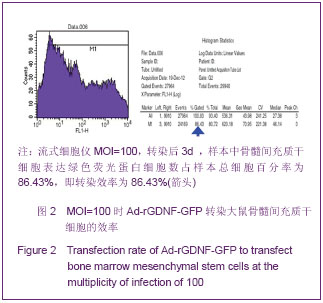
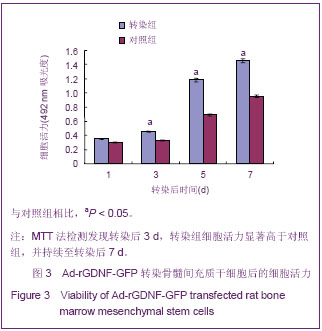
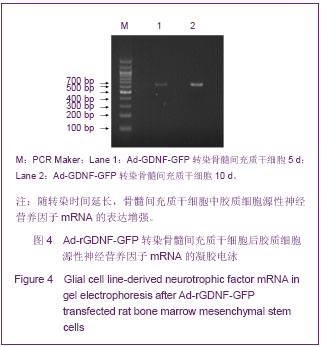
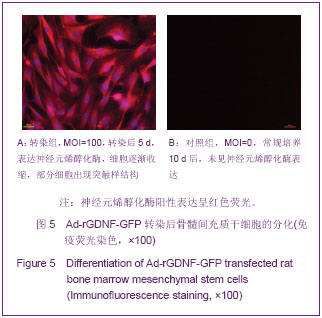
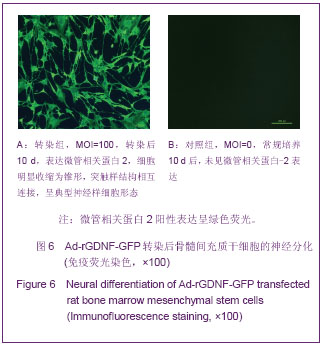
.jpg)